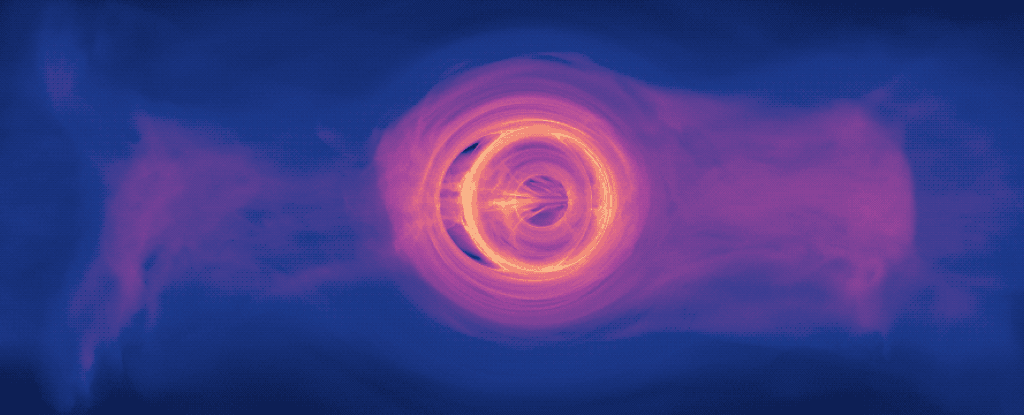Products You May Like
Gravitational wave interferometers such as LIGO are deeply impressive feats of engineering, honed over years to measure the barely-detectable ripples in space-time generated by massive cosmic objects.
But the cosmos has given us another tool with which we might be able to detect elusive gravitational wave signals. These are a type of dead star named pulsars, and delays in their precisely-timed flashes could be a hint of the gravitational wave background of the Universe – the hum of billions of years of cosmic collisions and exploding stars.
Earlier this year, the NANOGrav collaboration announced that they may have detected this hum. Now a second group, led by astrophysicists Boris Goncharov and Ryan Shannon of the ARC Centre of Excellence for Gravitational Wave Discovery (OzGrav) in Australia, has revealed their own results.
While their conclusions are more conservative, the results are not inconsistent with the gravitational wave background. This suggests that we may be barking up the right tree after all – but there’s still a whole lot of work to be done before a conclusive claim can be made.
“Recently the North American Nanohertz Observatory for Gravitational Waves collaboration (NANOGrav) found evidence for the common-spectrum component in their 12.5-year data set,” the researchers wrote in their paper.
“Here we report on a search for the background using the second data release of the Parkes Pulsar Timing Array. If we are forced to choose between the two NANOGrav models – one with a common-spectrum process and one without – we find strong support for the common-spectrum process.”
Gravitational wave astronomy is still pretty much in its infancy. We have detected gravitational waves using the LIGO-Virgo interferometers here on Earth – the huge blips generated by colliding black holes and neutron stars. But there should be a much fainter signal suffusing the Universe – the gravitational wave background.
This is the collective signal accumulated across the history of the Universe. Every colliding pair of black holes or neutron stars, every core-collapse supernova – even the Big Bang itself – should have sent ripples ringing across space-time.
After all this time, these waves would be weak and hard to find, but they’re all predicted to make up a resonant ‘hum’ in the background of the Universe.
Now that we have confirmation that gravitational waves exist and can be detected – a discovery just six years old – scientists are looking for the gravitational wave background. It could reveal a lot about the history of the Universe – cracking it would be a major scientific breakthrough. And, while this won’t be easy, pulsars show a heck of a lot of promise.
These are a type of neutron star, rotating at insanely high speeds, and oriented in such a way that they flash beams of emission from their poles as they do so – like a cosmic lighthouse. These millisecond pulses are so regular that we can use delays in their timing for a range of potential applications. This is called a pulsar timing array.
Because gravitational waves warp space-time, they should, theoretically, produce minute delays in pulsar timing. This is what the NANOGrav team found in their data, and what the OzGrav team have also been looking for.
“The [gravitational wave] background stretches and shrinks space time between the pulsars and earth, causing the signals from the pulsars to arrive a bit later (stretch) or earlier (shrink) than would otherwise happen if there were no gravitational waves,” Shannon told ScienceAlert earlier this year.
The team analyzed data from the Murriyang radio telescope in Parkes, Australia, and found deviations in the timing of pulsar emission consistent with what we’d expect from the gravitational wave background. They also ruled out other potential sources of the signal, such as interference from Jupiter and Saturn.
However, we still don’t have enough data to confirm that we are indeed looking at the gravitational wave background, rather than regular pulsar noise, for example. We need more observations and data to determine whether the signal is correlated across all the pulsars in the sky, which is going to take a lot more time and work.
“To find out if the observed ‘common’ drift has a gravitational wave origin,” Goncharov said, “or if the gravitational-wave signal is deeper in the noise, we must continue working with new data from a growing number of pulsar timing arrays across the world.”
This work, and NANOGrav’s earlier this year, are the first steps towards making that detection. It’s an incredibly exciting time for gravitational wave astronomy.
The research has been published in The Astrophysical Journal Letters.
